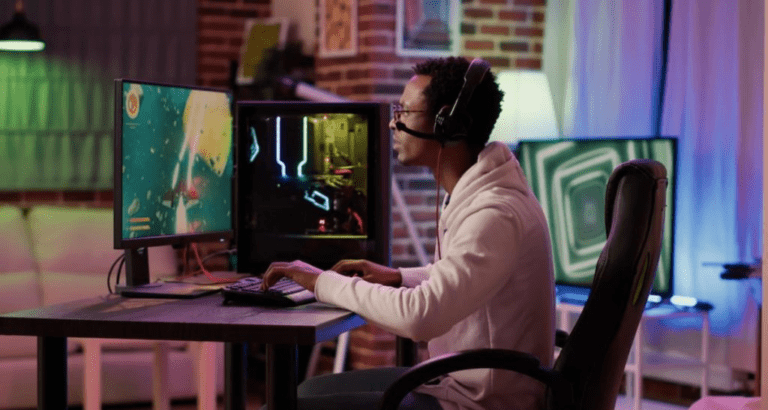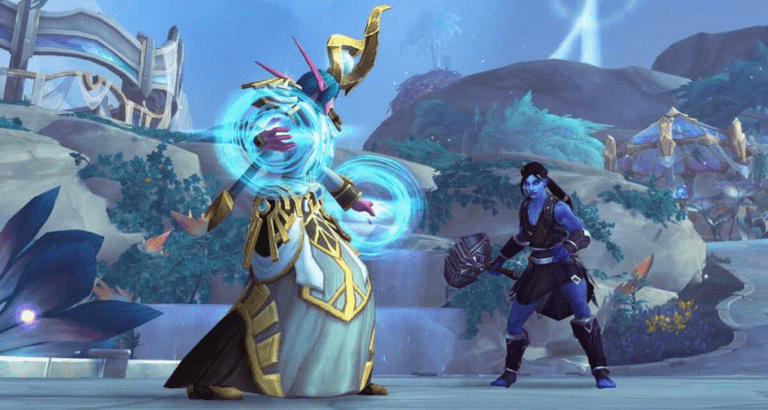Takeaway
In the fast-paced world of 3D game development, optimizing your workflow is crucial for maintaining productivity and ensuring high-quality output. This article explores seven code tweaks that can significantly enhance the speed of your 3D games studio workflow, allowing developers to focus on creativity rather than technical bottlenecks.
1. Optimize Asset Loading with Asynchronous Techniques
One of the most significant bottlenecks in 3D game development is asset loading. Traditional synchronous loading can lead to frame drops and stuttering gameplay. By implementing asynchronous loading techniques, developers can load assets in the background while the game is running. This can be achieved using coroutines in Unity or asynchronous tasks in Unreal Engine. For instance, Unity’s Addressables system allows for efficient asset management and loading, reducing the time spent waiting for resources to become available.
Implementation Example
In Unity, you can use the following code snippet to load an asset asynchronously:
IEnumerator LoadAsset(string assetPath)
{
var handle = Addressables.LoadAssetAsync(assetPath);
yield return handle;
if (handle.Status == AsyncOperationStatus.Succeeded)
{
Instantiate(handle.Result);
}
}This approach not only improves load times but also enhances the overall user experience by minimizing interruptions during gameplay.
2. Utilize Object Pooling for Dynamic Objects
Creating and destroying objects frequently can lead to performance issues due to memory allocation and garbage collection. Object pooling is a design pattern that mitigates this problem by reusing objects instead of instantiating new ones. This technique is particularly useful for dynamic objects like bullets, enemies, or particles.
Implementation Example
In Unity, you can create a simple object pool manager:
public class ObjectPool : MonoBehaviour
{
public GameObject prefab;
private Queue pool = new Queue();
public GameObject GetObject()
{
if (pool.Count > 0)
{
return pool.Dequeue();
}
return Instantiate(prefab);
}
public void ReturnObject(GameObject obj)
{
obj.SetActive(false);
pool.Enqueue(obj);
}
}By implementing object pooling, you can significantly reduce the overhead associated with object creation and destruction, leading to smoother gameplay.
3. Optimize Physics Calculations
Physics calculations can be computationally expensive, especially in complex 3D environments. To optimize physics performance, consider reducing the frequency of physics updates or using simpler colliders. For instance, using box colliders instead of mesh colliders can drastically improve performance without sacrificing accuracy.
Implementation Example
In Unity, you can adjust the fixed timestep in the Time settings to reduce the frequency of physics calculations:
Time.fixedDeltaTime = 0.02f; // Default is 0.02f, adjust as necessaryAdditionally, consider using layers to selectively enable or disable collision detection between certain objects, further optimizing performance.
4. Leverage Level of Detail (LOD) Techniques
Level of Detail (LOD) techniques allow developers to use different models for objects based on their distance from the camera. By using lower-resolution models for distant objects, you can significantly reduce the rendering load on the GPU. This is particularly important in open-world games where many objects are rendered simultaneously.
Implementation Example
In Unity, you can set up LOD groups for your models:
LODGroup lodGroup = gameObject.AddComponent();
LOD[] lods = new LOD[3];
lods[0] = new LOD(0.5f, new Renderer[] { highResRenderer });
lods[1] = new LOD(0.2f, new Renderer[] { mediumResRenderer });
lods[2] = new LOD(0.1f, new Renderer[] { lowResRenderer });
lodGroup.SetLODs(lods);
lodGroup.RecalculateBounds();Implementing LOD can lead to significant performance improvements, especially in scenes with a high density of objects.
5. Optimize Shader Performance
Shaders are a critical component of 3D graphics, but poorly optimized shaders can lead to performance issues. To enhance shader performance, consider simplifying shader calculations, reducing the number of texture samples, and using lower precision where possible. Additionally, utilizing shader variants can help manage different rendering scenarios efficiently.
Implementation Example
In Unity, you can create a simplified shader using Shader Graph or by writing a custom shader in HLSL. For instance:
Shader "Custom/SimpleShader"
{
Properties
{
_MainTex ("Texture", 2D) = "white" {}
}
SubShader
{
Tags { "RenderType"="Opaque" }
LOD 200
Pass
{
CGPROGRAM
#pragma vertex vert
#pragma fragment frag
#include "UnityCG.cginc"
struct appdata_t
{
float4 vertex : POSITION;
float2 uv : TEXCOORD0;
};
struct v2f
{
float2 uv : TEXCOORD0;
float4 vertex : SV_POSITION;
};
sampler2D _MainTex;
float4 _MainTex_ST;
v2f vert (appdata_t v)
{
v2f o;
o.vertex = UnityObjectToClipPos(v.vertex);
o.uv = TRANSFORM_TEX(v.uv, _MainTex);
return o;
}
fixed4 frag (v2f i) : SV_Target
{
return tex2D(_MainTex, i.uv);
}
ENDCG
}
}
}By optimizing shaders, you can improve rendering performance and maintain high visual fidelity.
6. Implement Culling Techniques
Culling techniques are essential for optimizing rendering performance by preventing the GPU from processing objects that are not visible to the camera. Techniques such as frustum culling, occlusion culling, and distance culling can significantly reduce the number of draw calls and improve frame rates.
Implementation Example
In Unity, frustum culling is handled automatically, but you can implement occlusion culling using the Occlusion Culling system. To set it up:
Window > Rendering > Occlusion Culling
// Configure occlusion areas and settings in the inspectorBy effectively implementing culling techniques, you can ensure that only visible objects are rendered, leading to improved performance.
7. Profile and Optimize Regularly
Finally, one of the most critical aspects of optimizing your 3D game workflow is regular profiling and optimization. Utilize profiling tools such as Unity’s Profiler or Unreal’s Stat commands to identify performance bottlenecks. Regularly analyzing your game’s performance will help you make informed decisions about where to focus your optimization efforts.
Implementation Example
In Unity, you can access the Profiler by navigating to Window > Analysis > Profiler. Use the various modules to analyze CPU, GPU, memory, and rendering performance. This data will guide you in making targeted optimizations.
Conclusion
In conclusion, optimizing your 3D game development workflow is essential for enhancing productivity and ensuring a smooth gaming experience. By implementing these seven code tweaks—optimizing asset loading, utilizing object pooling, optimizing physics calculations, leveraging LOD techniques, optimizing shader performance, implementing culling techniques, and regularly profiling your game—you can significantly supercharge your studio’s workflow. These strategies not only improve performance but also allow developers to focus on creativity and innovation in their game design.
Key Points
- Asynchronous asset loading reduces wait times.
- Object pooling minimizes memory allocation overhead.
- Optimizing physics calculations enhances performance.
- LOD techniques improve rendering efficiency.
- Shader optimization maintains visual fidelity while improving performance.
- Culling techniques prevent unnecessary rendering.
- Regular profiling helps identify and address performance bottlenecks.
By adopting these practices, your 3D games studio can achieve a more efficient workflow, ultimately leading to better games and a more enjoyable development process.

